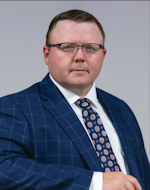Process skids offer a modular approach to manufacturers who are facing process-development challenges in the current work environment. Utilizing a process skid to overcome the challenges of getting a new process up and running is just one way that creative thinkers have discovered to reduce cost, leverage the available labor pool and save time and money as they build the next generation of manufacturing production lines.
What is a process skid, and how is it used and how does it help? A process skid is a stand-alone, purpose-built frame. This can be a single application-specific process or can contain a series of operations that are completed within the skid itself. Each stand-alone unit is inserted in the line where that particular application or system is needed to complete the full process.
Certain complex processes that are very extensive in scope can benefit from a process skid’s being utilized for a number of reasons. One of the benefits is that the skids can be factory-certified for compliance and functionality before it is delivered to the production site. This offers reliability for the process and ensures that the unit is fully tested off-site by the manufacturer, which gives the integrator confidence in the product and eases the integration process as it is simpler to connect the unit than to build and test the whole application or process on-site.
Another useful benefit is the reduction in the amount of time it takes to integrate a factory-tested unit into the production line. Instead of having to build everything from the structure to the elements of the application, the integrator can focus the available man-hours and energy on making the developed skid work within the system and move more quickly to the next task. Additionally, one of the more important benefits is the increased cost efficiency. Less labor needed is money saved, less time needed is cost driven out, and a proven and reliable system is a well-placed investment.
With the application-specific nature of each process, there is a high level of expertise and knowledge that is needed for successful integration. By utilizing an outside source to build the process skid you have the advantage of leveraging their expertise in the build project. The other consideration is the transfer and reduction of risk taken that is part of being the builder of the system.
The OEM is responsible for and able to certify that the process skid will do the job and meet the needs of the application. Often you will be assigned a project manager from the OEM who is able and responsible to answer questions or deal with matters that may arise, from the design all the way to the delivery and integration of the unit into the full system.
If we wait to build the individual processes and applications until after the facility’s manufacturing process is complete, we could lengthen the entire build process.
Generally, a skid will contain process control instruments to continually measure or regulate specific processes within the system such as temperature, humidity, level, conductivity, pressure or flow. Monitoring and being able to measure these variables are critical to process control and helps to ensure the quality of the product. For example, if we are measuring flow with a flow meter, we gain an accurate measurement of a specific proportion of a fluid to meet the requirements of our production process.
The four most common process variables that we measure are pressure, temperature, level and flow. These factors all influence the development and modification of a given process over a course of time.
Anything the product “feels” could be described by one of these four process variables. Each variable would have a set point (SP) and a process value (PV) that are monitored. For example, a furnace might have a SP of 1,000 °F and a PV of 1025 °F during operation.
In the past, process control was fully mechanical and required an operator to be readily available to read the process indicators and adjust the controlled components, such as valves, to regulate the process variables.
Technology, however, has helped to make great strides in process control through the advent of electronic instrumentation. The conversion from mechanical transmitters, controllers and valves to electronics has helped to reduce costs of maintenance while increasing efficiencies and production as they are more accurately and easily controlled.
Since it has become more commonly required for production systems to run around the clock, controlling the process variables is crucial to any industrial production process. The aim of any instrumentation system is to gain maximum production of a quality product while using the least amount of raw material necessary.
The demand for good measurements and the development of new and better methods of process control will only increase in the coming years as we work to drive out waste and inefficiencies in these industrial processes.
Andy Watkins is direct sales manager at Romi Machine Tools in Erlanger, Kentucky. Contact him at [email protected].




